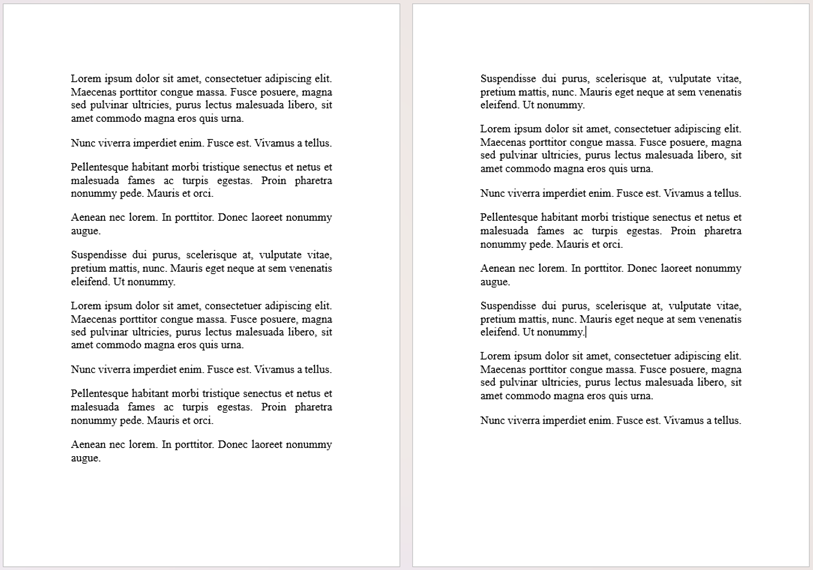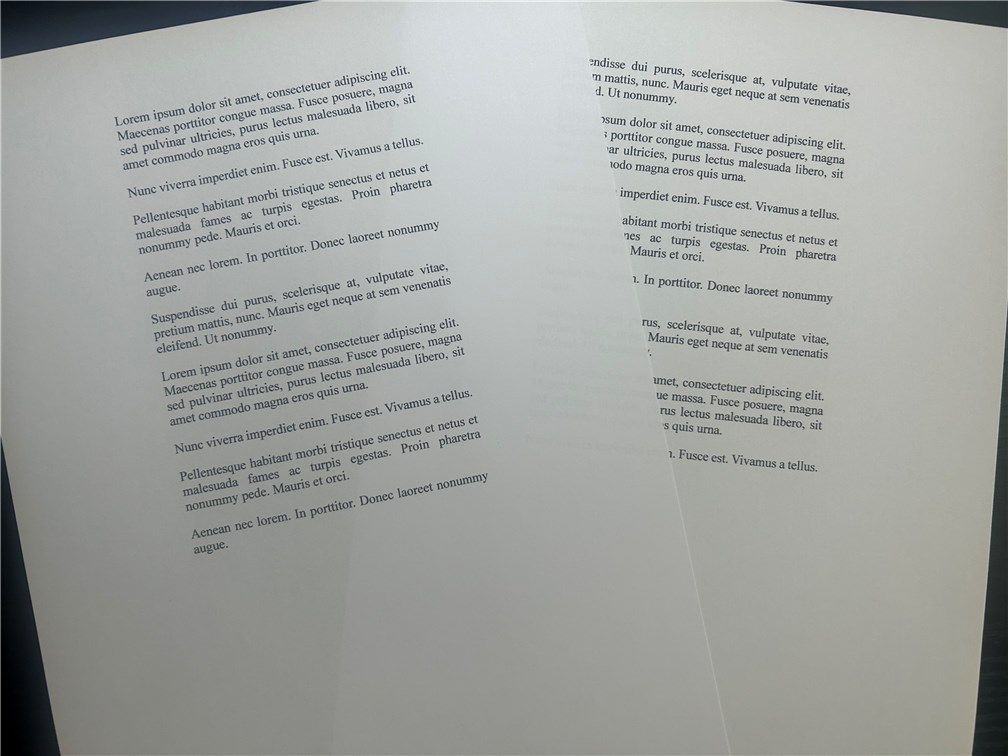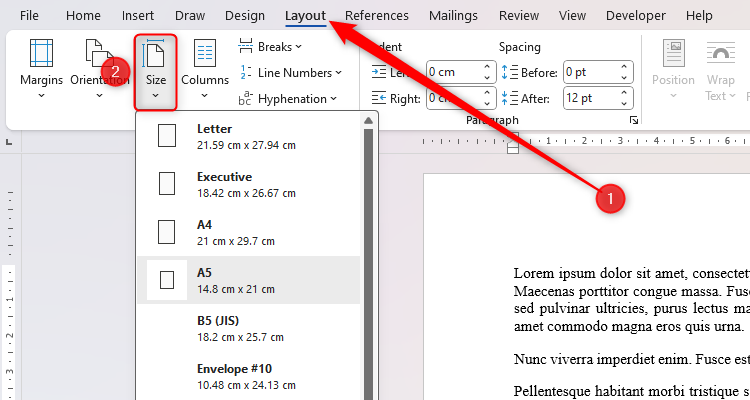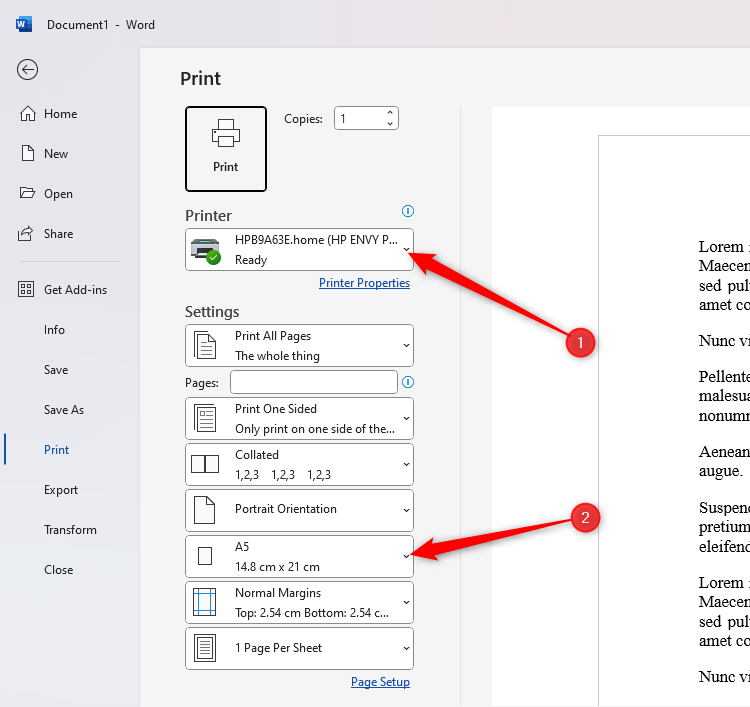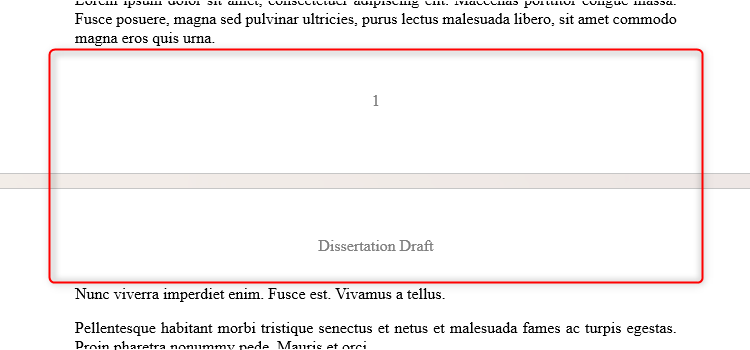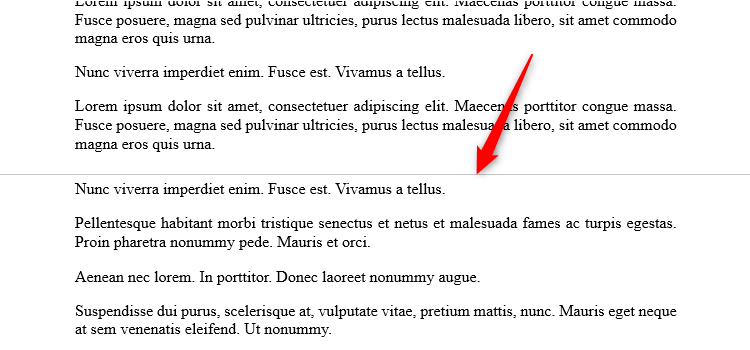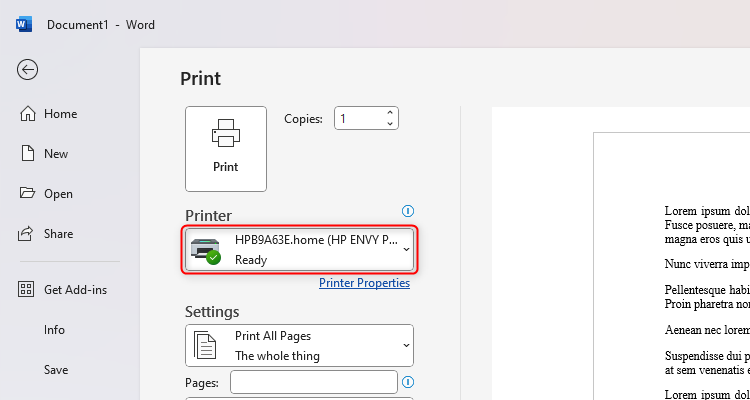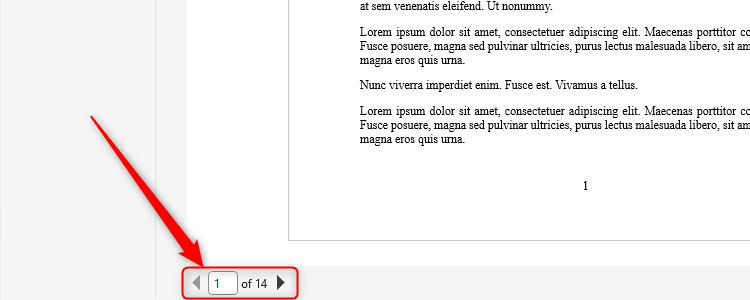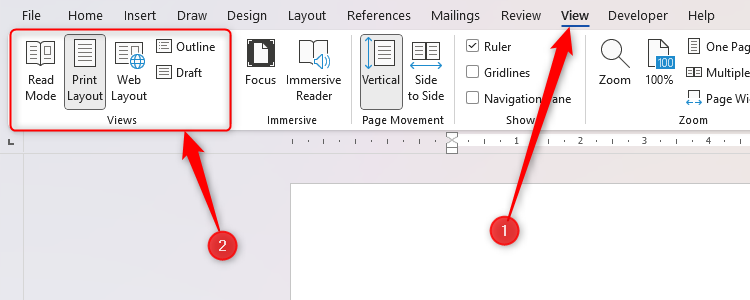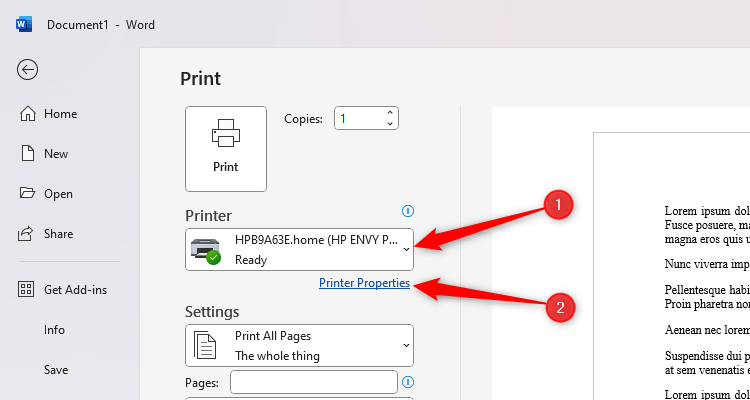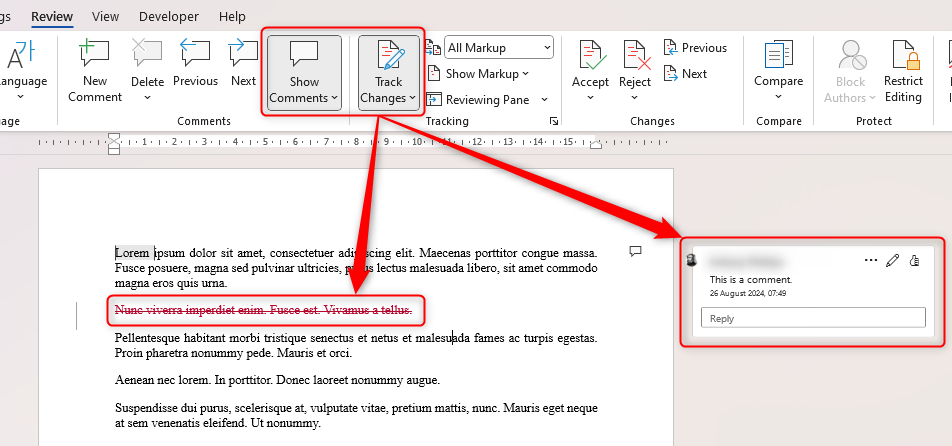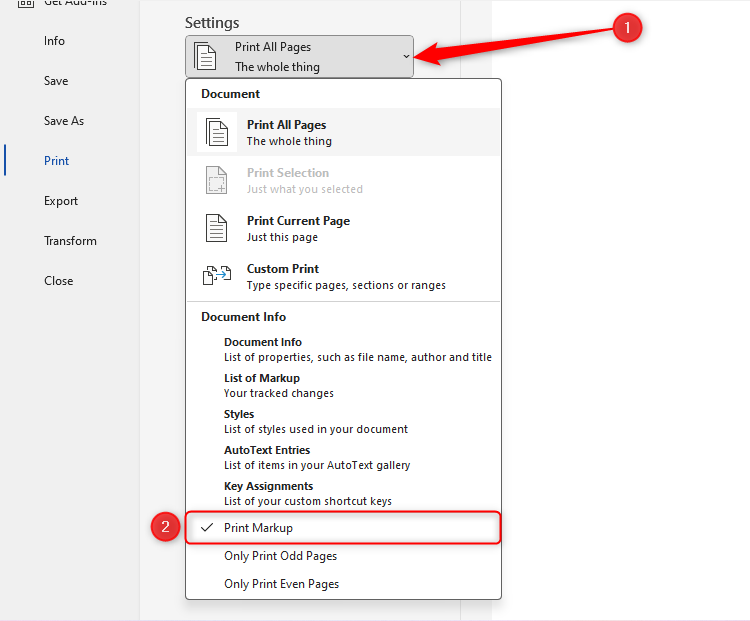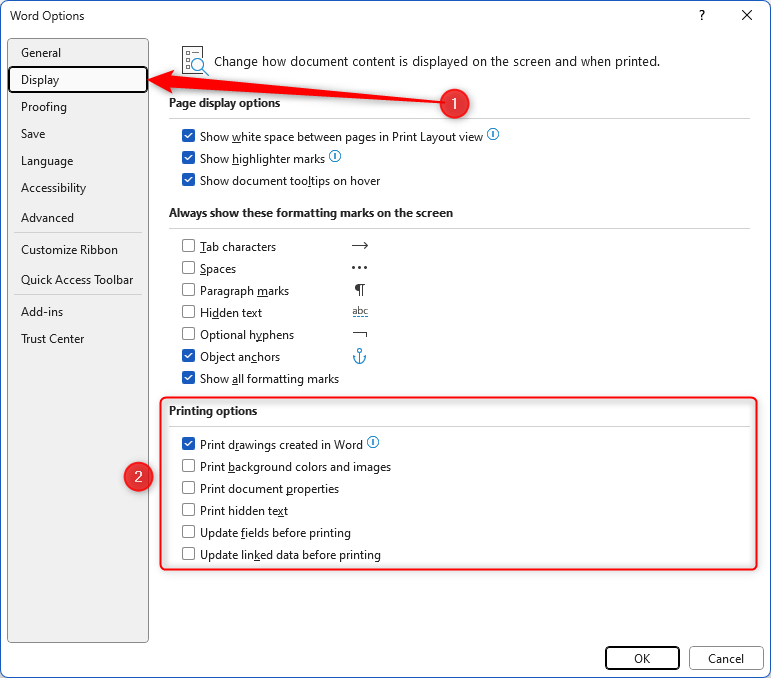Word documents can look great on screen, but what works on screen doesn’t always work on paper. Before you print your work, go through these steps so you can rest assured that your document will be presented exactly how you wish.
The steps in this guide refer to the Microsoft Word desktop app on Windows 11. However, some of the tips will also work on Word for the web and other operating systems.
Make Sure Your Paper Size Matches Your Printer
One of the reasons for the inconsistency between what you see on screen and on your printout could be a mismatch between your Word document’s paper size and the paper in your printer.
Let me show you an example. This is how my Word document appears on screen before printing, with normal margins around the side, and the text running to the bottom of the page.
However, this is how it looked when I printed it. Notice the extra-large margins around the edge, and the text cutting off at the bottom of the page.
This is because I printed a Word document that is set up to print on A5 paper, whereas my printer only has A4. One way to check and change the paper size is by clicking Layout > Size in your Word document.
You can then double-check the paper size when you go to print (Ctrl+P) your document. First, make sure the correct printer is selected, and then see the Settings menu to see and change your page size.
Check for Hidden White Spaces
By default, Microsoft Word shows you the margins at the top and bottom of each page, including any headers or footers you have added, and a physical gap between each page. This is known as the “white space.”
However, if you double-click the gap between the two pages, the upper and lower margins disappear, leaving just a faint line to remind you of the natural page break.
This tool, which makes it easier to navigate a long document by adding more continuity to your paragraphs, is intended purely for your screen. In other words, the margins are still there—they’re just hidden. So, when you print your work, the margins will still print, even though they’re not visible on your screen.
If you want the white space to show again before you print, so that you can double-check you’re happy with how the document will look, simply double-click the faint line, and your margins will reappear.
Preview Your Pages
Older versions of Microsoft Word had a dedicated Print Preview option, which showed you what your work would look like when printed. Microsoft then recognized the usefulness of this preview, so added it as a default view when you go to print your work.
After pressing Ctrl+P, first make sure that you have selected the correct printer. This will ensure that your print preview represents what that specific printer intends to print.
Then, use the arrows at the bottom of your screen to scroll through your work and check that you’re happy with how it’ll look. Providing your paper size aligns with your printer’s paper, the preview will replicate how your document will print.
Ensure You’re on the Print Layout View
Another reason your document might display differently on your screen to how it prints is that you might not be in the Print Layout view.
Microsoft Word offers different views, accessible through the View tab on the ribbon.
Each of these views has a specific purpose. For example, the Draft view hides all images, headers, footers, and page breaks, allowing for more efficient editing. Importantly, the different views display your document in very different ways, meaning what you see on your screen might not represent how your document will look when printed.
As its name suggests, the Print Layout view includes the page margins, headers, footers, and natural page breaks, most closely representing how your document will look when printed.
Check Printer Properties
The following printing issues can be resolved by checking your printer’s properties:
- Your printout is in black and white (grayscale), even though you have used colors.
- The text and images are lower quality on paper than on your screen.
- Each printed page contains more than one page from your on-screen document.
To access Printer Properties, press Ctrl+P, choose the correct printer, and then click “Printer Properties.”
The layout of the dialog box that opens will vary depending on the printer you are using. However, if you review the options and click through the different tabs, you will find the properties you need if you’re faced with any of the issues listed above.
Show or Hide Markup
Word documents might contain comments or markups that, depending on your settings, may or may not display when printed.
In this example, the work contains a line removed through Word’s Track Changes option, and a comment has been added as an annotation to the start of the first paragraph. Both of these options are accessed through the Review tab on the ribbon.
However, these changes—known as markups—will only show on your printout if you explicitly tell Word that’s what you want to happen. To do this, after pressing Ctrl+P, open the “Settings” drop-down, and check “Print Markup.”
The preview on the right-hand side of the print screen will now show you how these markups will appear when you print.
When you print comments, the time and date are removed, and the person’s initials are used instead of their full name. These simplified comments mean that they can all fit on each printed page in the right place. Also, Word’s comments print in a gray pane on the right-hand side of your page. Unless you
take a screenshot
, it’s impossible to exactly replicate how comments appear on-screen when you print.
Review These Other Printing Options
Finally, Microsoft Word gives you more options to make sure that your document prints how you want it to. Click File > Options to open the Word Options dialog box, and click “Display.” Then, review the choices in the Printing Options menu at the bottom.
- Print Drawings Created In Word: If this is unchecked, Word will print blank boxes where shapes and text boxes appear on your screen.
- Print Background Colors And Images: If your background color or images are not printing, make sure you check this option. Word unchecks this box by default, as it tries to optimize your printing speed and save ink!
- Print Document Properties: When checked, this option forces Word to print a separate page containing the document’s name, author, word count, and other properties.
- Print Hidden Text: Even though hidden text doesn’t show on your screen, it will appear on your printout if you check this option.
- Update Fields Before Printing: Checking this option ensures that fields in your Word document that are subject to change—such as calculations, a table of contents, or today’s date—are updated automatically before you print.
- Update Linked Data Before Printing: If your Word document contains snippets of linked information from another file, checking this option forces the program to make sure that the latest version of that data is displayed in your printout.
Hopefully, your printout will now look exactly how it looks on screen. However, improving your Microsoft Word formatting will also help you to feel more confident that your work will appear as you expect.


